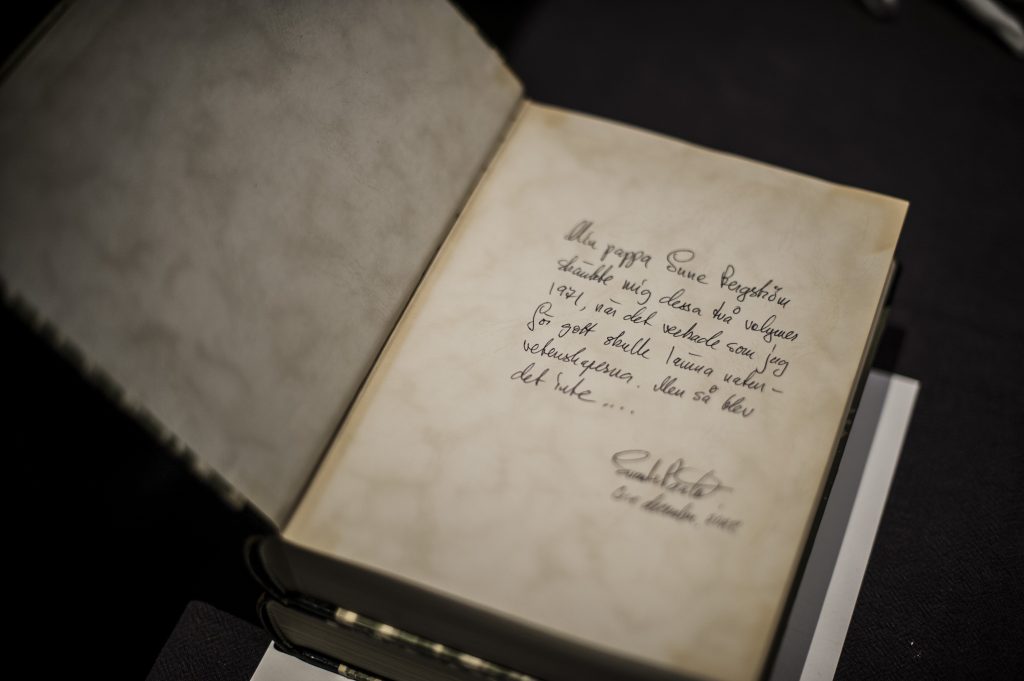“My father Sune Bergström gave me these two volumes in 1971, when it seemed that I would be leaving science for good. But that didn’t happen,” said Svante Pääbo when he donated the books in December.
Svante Pääbo’s father Sune Bergström was awarded the Nobel Prize in Physiology or Medicine in 1982. Forty years later, Svante Pääbo received the same prize. But in the 1970s, it was not at all obvious that his son Svante would take an interest in science. He had chosen to study history and Egyptology. Chemistry professor Sune Bergström gave his son a two-volume encyclopaedia of science and technology, as a kind of farewell gift to the natural sciences. And perhaps a seed was sown with the help of these books, because eventually Pääbo returned to science. His path from the humanities to genetics went via Egyptology: It was the DNA of mummies that led to his first major scientific breakthrough. Over the years, the books from his father have been an inspiration to Pääbo and have reminded him of his love of science.
-

© Nobel Prize Outreach. Photo: Anna Svanberg
-

© Nobel Prize Outreach. Photo: Anna Svanberg
-
© Nobel Prize Outreach. Photo: Anna Svanberg
-
© Nobel Prize Outreach. Photo: Anna Svanberg
When laureates visit the Nobel Prize Museum in Stockholm’s Old Town, they are always asked to bring an artefact that has meant something special to them. It may be an artefact that tells about who they are, or that has a connection to the achievements for which they have been rewarded. These tangible objects help bring to life the laureates’ stories, which are retold in exhibitions and by the guides at the museum. The collection already includes a handwritten manuscript from Albert Einstein and the shawl that Malala Yousafzai wore when she gave a speech to the UN General Assembly.
For further information and press photos, please contact:
press@nobelprize.org
Nobel Prize Museum
The Nobel Prize shows that ideas can change the world. The courage, creativity and perseverance of the Nobel Prize laureates inspire us and give us hope for the future. Films, in-depth tours, and artefacts tell the stories of the laureates and their contributions “for the greatest benefit to humankind”. Based on the Nobel Prize’s unique combination of fields – natural sciences, literature and peace – we examine the greatest challenges of our time and show how we can respond to them through science, humanism and collaboration. With our exhibitions, school programmes, lectures and conversations, we at the Nobel Prize Museum strive to engage the public in making a better world. Today we are located on Stortorget, the main square in Gamla Stan, Stockholm’s Old Town district. We are planning to create a new home for our public outreach activities at Slussen in central Stockholm.
Disclaimer: The Nobel Prize Museum is not directly or indirectly involved in the process of nominating or selecting Nobel Prize laureates. These procedures are strictly confidential and regulated by the Nobel Prize awarding institutions.
© Nobel Prize Museum 2023. Nobelpriset®, Nobel Prize® and the Nobel Prize medal are registered trademarks of the Nobel Foundation.